Jul 01, 2025
Jul 01, 2025
We are now reaching the final phase of Hindu Temple architecture in the North. In several areas, the painstakingly evolved theories of construction, the craftsmen and stonecutters’ skill, combined with the backing of a dynasty powerful enough to conceive and execute such a concept, all combined to produce temples of breathtaking glory, which remain unsurpassed to this day.
There were four main sites, which we shall discuss:
The Glory of Khajuraho
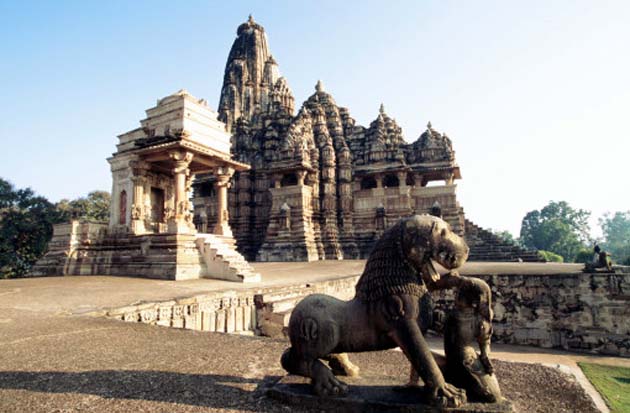
The sleepy town of Khajuraho is home to some of the finest examples of Hindu temple construction. Among the many temples that exist, most have been deserted. Hence Khajuraho is not a religious pilgrimage; rather it serves as a magnet for tourists from all over the world.
All the temples of Khajuraho are set on broad terraces. In profile they display a unity of composition and graceful silhouettes that exceeds any preceding examples. But the most distinctive feature of the silhouette of a Khajuraho temple is without doubt its distinctive shikhara.
The effect of height of a temple till now was mitigated and compromised by the horizontal courses of stone used for construction. However, the shikharas at Khajuraho are really a composition of many mini-shikharas converging on the main spire. The resulting silhouette has been compared to a chain of mountains building up to its highest point.
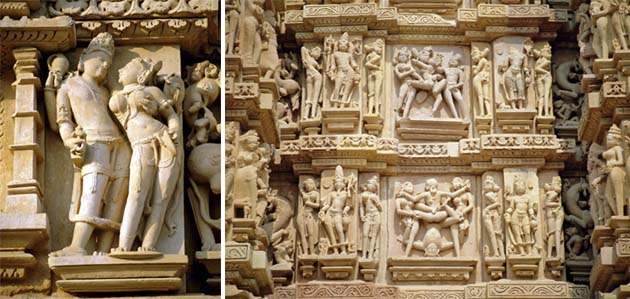
The temples here are also justly famous for their erotic sculpture. Indeed, it is primarily for this that Khajuraho is known. Why would a temple, a place of worship be adorned with such carving?
For some historians this is evidence of the decadence of the Chandela kings, a hypothesis backed up by the fact that the Chandela dynasty did not survive for long thereafter. However, the presence of erotic sculpture elsewhere too may point to the fact that for the Hindu, life was meant for living in all its aspects, and he merely depicted scenes of a fact of life, without being conscious of any taboo attached, which after all was a much later ‘invention’.
The great Lingaraja at Bhubhaneswar
Meanwhile, the temple city of Bhubhaneswar, which we have discussed in a previous article, was witnessing the construction of its biggest temple – the Great Lingaraja. As is evident from its name, the temple was dedicated to Shiva. Unlike the temples at Khajuraho, the ones in Bhubhaneswar are still active, the most famous example being the temple of Jagannath at Puri.
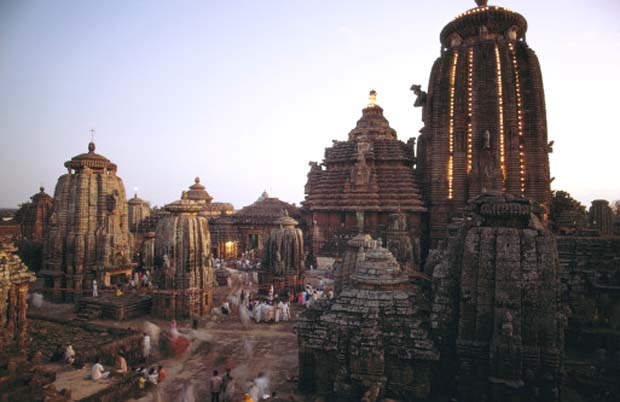
To accommodate the increasing number of pilgrims, a number of additions were made to the Lingaraja in subsequent years. The Nat Mandir, or Hall of Dance, and the Bhog Mandir, or the Hall of Offering, were the major ones. Unfortunately, these were rather unimaginative and had a detrimental effect on the silhouette of the Jagannath temple as a whole. Thus, though the Lingaraja is unsurpassed in its importance as a center of pilgrimage in Orissa, there are many smaller examples of temple construction that are far better architecturally.
The Sun Temple, Konark
This temple, had it been successfully completed, would have been the biggest temple in India by far. Yet it seems that the conception of the structure exceeded the available structural skill. For even before completion, the foundation of the temple started sinking under the great weight above, and the 200 feet high shikhara could never be finished.
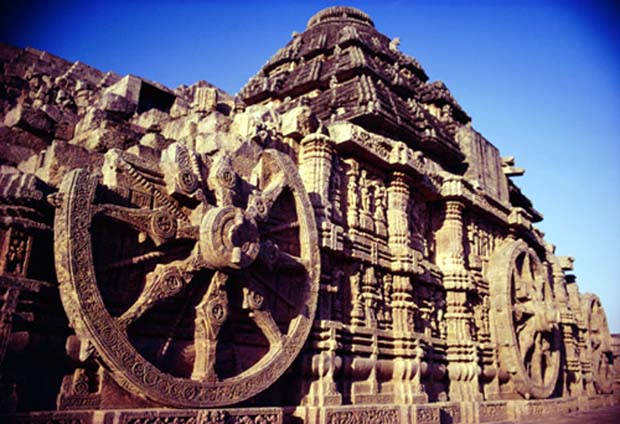
What remains of the temple now is the mandapa, which alone is colossal. The British walled up the interior of the mandapa with rubble to prevent its roof from collapsing.
From the outside, the sun temple is on a large platform, which has on its sides carved wheels. The whole temple was conceived as the vehicle of the Sun.
The temple at Konark too is ultimately a triumph of sculpture, its great size no deterrent to the skilled stonecutters. Although it takes second place behind Khajuraho, the sculpture at Konark is no less sensuous nor less haunting.
The Sun Temple, Modhera
In the middle of the desert in Gujarat lie the haunting remains of what must have been one of the greatest temples of mediaeval India, the Sun temple at Modhera.
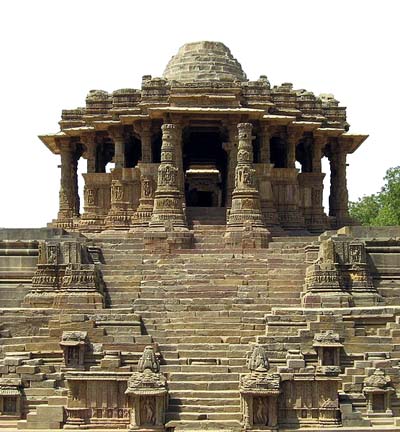 The most visible and famous ruin at Modhera is that of a ritualistic bathing tank in front of the Sun Temple. This tank, with its pattern of steps, has been the inspiration for many an architectural effort even today. From this tank, a broad flight of steps goes up to the temple itself, through an ornate torana, or gateway.
The most visible and famous ruin at Modhera is that of a ritualistic bathing tank in front of the Sun Temple. This tank, with its pattern of steps, has been the inspiration for many an architectural effort even today. From this tank, a broad flight of steps goes up to the temple itself, through an ornate torana, or gateway.
The torana leads on to the mandapa that forms the heart of the temple. The shafts of the columns of this hall are exquisitely and sensuously carved, almost embroidered.
This temple is little more than a ruin now. Yet the poignant remains are ample testimony to the magnificence that must have been the great Sun Temple of Modhera.
An Age Ends
13-Apr-2001
More by : Ashish Nangia

|
itis a very good job for a INDIAN |